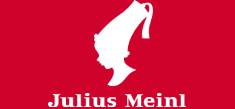VAT on Construction Industry
Overview of VAT on construction Industry
Construction services can be broadly defined to include a wide range of building and construction services that are performed at businesses. They include services such as site preparation, foundation work, scaffolding, bricklaying, roofing, renovation, and repairs.
The key players in the construction industry are:
- Developer: He acquires land and engages contractors to construct building or structure on the land.
- Main Contractor: He is engaged by the developer to carry out the construction and he takes full responsibility for the completion of the construction project.
- Sub-contractor: He is engaged by the main contractor to perform part of the main contractor’s work. Sub-contractors include specialists such as plumbers, electricians, painters, and bricklayers.
Construction services performed in UAE are liable to the VAT, except certain exempt services discussed later. However, construction service provided outside UAE is an export of service hence it will be a zero-rated service.
Construction of commercial property is liable to VAT at the standard rate i.e. 5%. However, construction of residential buildings and charity related buildings is zero rated. It means, in the case of residential and charity related buildings the VAT already paid on building materials can be claimed back without paying any further tax on the building. On the other hand, in the case of commercial buildings, VAT is to be paid on the construction of building @ 5%and can claim input tax while paying such output tax.
In the construction industry, there are developers, main contractors, and sub-contractors. It is possible that the sub-contractor may not be registered for tax due to turnover not reaching the threshold limit for mandatory registration. In that case, it is advisable that such small contractors should get voluntarily registered if they are reaching the voluntary registration threshold limit.
Time of Supply
Construction service is the case of continuous supplies and stage payments. The supplier may invoice his customers in progress payments monthly or at regular intervals for the construction services performed. VAT is to be charged on the progress payments and retention sum received for the supply of construction services in UAE at the earlier of the following:
- Date of an invoice issued
- Due date of payment shown on the invoice
- Date of payment made
Hence, in this case the time of supply will be determined by the actual tax point.
Levy of VAT
VAT is to be charged on payments related to construction services, retention sum, deposits, if the deposit is charged for a sale of documents or if it is intended to be used to offset against future payments, any other advance payment that is not for a refund but will be set off against any future payments. VAT is not charged on damages and out of court settlements which are paid for the breach of warranty or delays in completion of contracts as they are compensatory in nature.
It is relevant to understand the terms like advance payment, retention sum, and deposit money.
Retention Sum
Most construction contracts contain provisions for the retention of the amount due to the contractor. This amount (commonly known as the “retention sum”) is a specified amount withheld at each stage of progress payment, and will only be released to the contractor when the customer is satisfied with the work performed. Usually, the total retention sum is released only after the construction project has been completed.
VAT is to be accounted for the retention sum at the earlier of the following dates:
- The date of receipt of payment or
- The date of issuance of invoice
Deposit
In construction services generally, the deposit is paid for getting the documents including plans specifications, schedules of quantities related to the construction services. This deposit is liable to VAT because there is a supply of certain documents.
Advance payment
In case of construction services, tenders are often invited for such projects. In such case there may some advance deposit is made as a security, to ensure that the successful tenderer carries out the obligations detailed in the contract. VAT is not charged on such deposits, because they are meant to be refunded.
Tax Invoices and Letters of Claims
When the supplier issues letters of claim to his customers stating the value of work completed after each completed stage of the construction, the customer’s architect will perform a valuation and certify the value of work done before payment is made. The certified amount may differ from the amount stated in the letter of claim.
The letter of claim cannot be treated as a tax invoice, as it does not contain the final amount payable by the customer. The supplier should issue a tax invoice to its customer upon certification by the architect on the agreed amount of billing. The supplier is also required to maintain the “certificate of work done” by the architect together with the tax invoice to support the value invoiced to its customer.
In order to make adjustments to the tax invoice issued previously, the supplier has to issue a credit note (to reduce the value of supply and corresponding VAT) or issue an additional tax invoice (to increase the value of supply and corresponding VAT) to reflect the adjustment.
Counter Supplies
There may be cases where the developer or the main contractor supplies the building material to the sub-contractor or the developer providing the building material to the main contractor. In such cases, both parties become suppliers at some point and both of them will issue the invoice separately. They cannot issue the invoice on the net amount, but on the separate amounts.
Example 1
You are contracted by the main contractor to provide flooring works which include the supply of tiles and tile-laying services. The main contractor purchases the tiles directly and provides them to you for the flooring work.
In this case, there are two separate supplies:
- The supply of the tiles from the main contractor to you; and
- The supply of the tiles and tile-laying services from you to the main contractor
Both the VAT-registered main contractor and you should each issue a tax invoice for the gross value of the supply made to each other and account for the VAT accordingly.
It is incorrect for you to charge and account for VAT only on the amount of payment made by the main contractor, net of the value of the tiles. You have to charge and account for VAT based on the gross value of the supply of tiles and tile-laying services.
However, if you are contracted to provide only the tile-laying services and not the tiles, there is only one supply from you to the main contractor, that is, the provision of this tile-laying service. This is because the main contractor has engaged you to provide the tile-laying services only. In this case, you are required to charge and account for VAT on the supply of tile-laying services.
Example 2
A main contractor A Ltd, awards a tender to sub-contractor, B Ltd to supply the bricks and construct the brick walls for a building project for a total contract sum of $ 15,000. Both A Ltd and B Ltd are registered for VAT.
A Ltd subsequently decides to supply the bricks to B Ltd for this project. The total value of the bricks is $ 8,000. The correct VAT treatment for the two supplies is as follows:
A Ltd has to charge VAT on $ 8,000, which is for the supply of bricks to B Ltd.
B Ltd has to charge VAT on the contract sum of $ 15,000 which is for the supply of bricks and construction services to A Ltd.
It will be incorrect for B Ltd to bill A Ltd VAT only on the difference of $ 7,000 (i.e. $ 15,000 – $ 8,000) that is payable by A Ltd.
Example 3
In contrast to the above example, if B Ltd is contracted by A Ltd to construct the brick walls only, there is only one supply from B Ltd to A Ltd. Assuming the contract sum for the construction of brick walls is $ 7,000, the correct VAT treatment is as follows:
B Ltd has to charge VAT on $ 7,000 which is for the supply of construction service to A Ltd.
Example 4
In case of tender and contract deposit
A VAT-registered property developer, A Ltd, calls for tender for a building project. Interested tenderers can purchase the tender documents containing details of the project (e.g. plans, specifications, schedule of quantities)for a fee of $25.
A Ltd award the building contract to a VAT-registered main contractor, B Ltd. Under the contract, B Ltd is required to submit a security deposit in the form of a banker’s guarantee of 5% of the contract sum for non-performance. This deposit will be refunded upon the completion of the contract.
This project is a large-scale project and B Ltd does not have sufficient funds to purchase the raw materials and procure the labor required to get the project started. Therefore, B Ltd requested A Ltd for an advance payment (akin to a deposit) which will be used to offset against future progress payments.
In this case, A Ltd has to charge and account for VAT on the sale of the tender documents of $25. As for the security deposit submitted by B Ltd, A Ltd does not have to charge and account for VAT as there is no supply made.
B Ltd has to charge and account for VAT on the receipt of advance payment from A Ltd as it will be used to offset against future progress payments.
Compensation for Suspension of Work
In the process of developing a property, the developer may request the contractor to suspend work for a certain period of time and in return, pay a certain sum of money to the contractor as compensation.
If the payment is to compensate the contractor for the loss of income or for costs incurred as a result of the suspension of work, this payment will not attract VAT. However, if the payment relates to work carried out by contractor prior to the suspension of work, this payment is a consideration for the supply that was made by customer to the contractor. Accordingly, VAT will be charged on this payment.
Similarly, if payments are paid for a breach of warranty or delays in the completion of project, it is not subject to GST as the payments are compensatory in nature.
Example 1
A VAT-registered main contractor, A Ltd, did not complete the building project by the stipulated completion date stated in the contract with a developer. A Ltd is required to pay liquidated damages to the developer at a cost of $3,000 per calendar day for each day that the completion of the project is delayed. Such liquidated damages are not subject to VAT as they are compensatory in nature.
Example 2
A main contractor, B Ltd has entered into a contract for a building project for a total contract sum of$1,200,000 with a developer, A Ltd. Both B Ltd and A Ltd are registered for VAT.
Under the contract, B Ltd is required to carry out rectification works during the defect liability period while A Ltd will hold $150,000 as retention sum which will only be released to B Ltd upon completion of the building project.
During the defect liability period, A Ltd noted some defects in the building. B Ltd, however, did not carry out the rectification work.
Scenario A
A Ltd hired another contractor to rectify the poor workmanship B Ltd. A Ltd incurred $100,000 for the rectification works. A Ltd can recover the $100,000 from B Ltd in two ways:
a) Deduct the $100,000 from the retention sum of $150,000
In this case, there are two separate supplies made:
- The first supply is from B Ltd to A Ltd for completing the building project (though not entirely). B Ltd has to charge and account for VAT on the full value of the building project (i.e.$1,200,000)
- The second supply is from A Ltd to B Ltd for the supply of rectification works because A Ltd is making good the defects that should have been done by B Ltd. A Ltd has to charge and account for VAT on $100,000
b) Claim payment from B Ltd
A Ltd may go to court to seek payment from B Ltd for the rectification cost of $100,000 or this may be agreed by an out-of-court settlement. Such payment is subject to VAT as it is paid in relation to taxable supplies made by A Ltd to B Ltd for making good the defects which should have been done by B Ltd.
In this case, B Ltd should still charge VAT on the full value of the building project (i.e. $1,200,000) to A Ltd and A Ltd should charge VAT on the rectification works of $100,000 to B Ltd.
Scenario B
A Ltd decided that it is not cost effective to rectify the poor workmanship of B Ltd and therefore, no rectification work was carried out. Nevertheless, A Ltd went to court to claim compensation from B Ltd for the poor work done.
In this case, the compensation received by A Ltd is not subject to VAT as there is no supply made. The decision taken by A Ltd to sue B Ltd will not affect the original supply of building project made by B Ltd to A Ltd. Accordingly B Ltd should continue to charge GST on the full value of the building project (i.e. $1,200,000) to A Ltd.
VAT Liability in the case of Reimbursements and Disbursements
In some cases, the developer may purchase the materials for the contractor and subsequently recover the material cost from the contractor, then the developer must charge VAT on the recovery of costs. This is the case of reimbursement and it will be treated as the developer has purchased the material and then supplied it to the contractor. Hence, this is also a supply that is liable to VAT. But if the developer is only facilitating the payment by the contractor to the supplier then it is disbursement, hence no need to charge VAT on it.
The test of reimbursement and disbursement is on principal and agent basis i.e. if the developer is acting as principal then he is liable to charge VAT, but if he is acting as an agent then he is not required to charge VAT.
Example 1
A sub-contractor A Ltd requested its main contractor B Ltd to buy certain raw materials on its behalf. B Ltd bought these goods from an unregistered supplier for AED 1000 and was issued an invoice in its name.
As B Ltd is registered for VAT, B Ltd has to issue a tax invoice and charge VAT of AED 70 on the supply of the raw materials to A Ltd, even though these goods were purchased without VAT. B Ltd is making a separate supply of goods to A Ltd in this instance.
Example 2
A developer A Ltd requested its main contractor B Ltd to apply for a building permit on its behalf with the Authority. The building permit is registered under the developer A Ltd. In this instance, B Ltd does not have to issue a tax invoice and charge VAT on the recovery of expenses for the application of a building permit as it is merely making the payment to Authority on behalf of A Ltd.
Want to learn more about VAT on Construction Industry?
A Member Firm of Andersen Global
- 175+ Countries
- 525+ Locations
- 17,500+ Professionals
- 2350+ Global Partners

Need Assistance?
Get In Touch
We appreciate your interest in IMC and are eager to address your needs.
To ensure we address your needs accurately and promptly, please fill out this form. This will help us in identifying and connecting you with the appropriate team of experts in our organization.
We take pride in our responsiveness and aim to get back to you within a span of 1-2 business days. Your journey towards solutions starts here.
Companies we have worked with










































 IMC Group
IMC Group